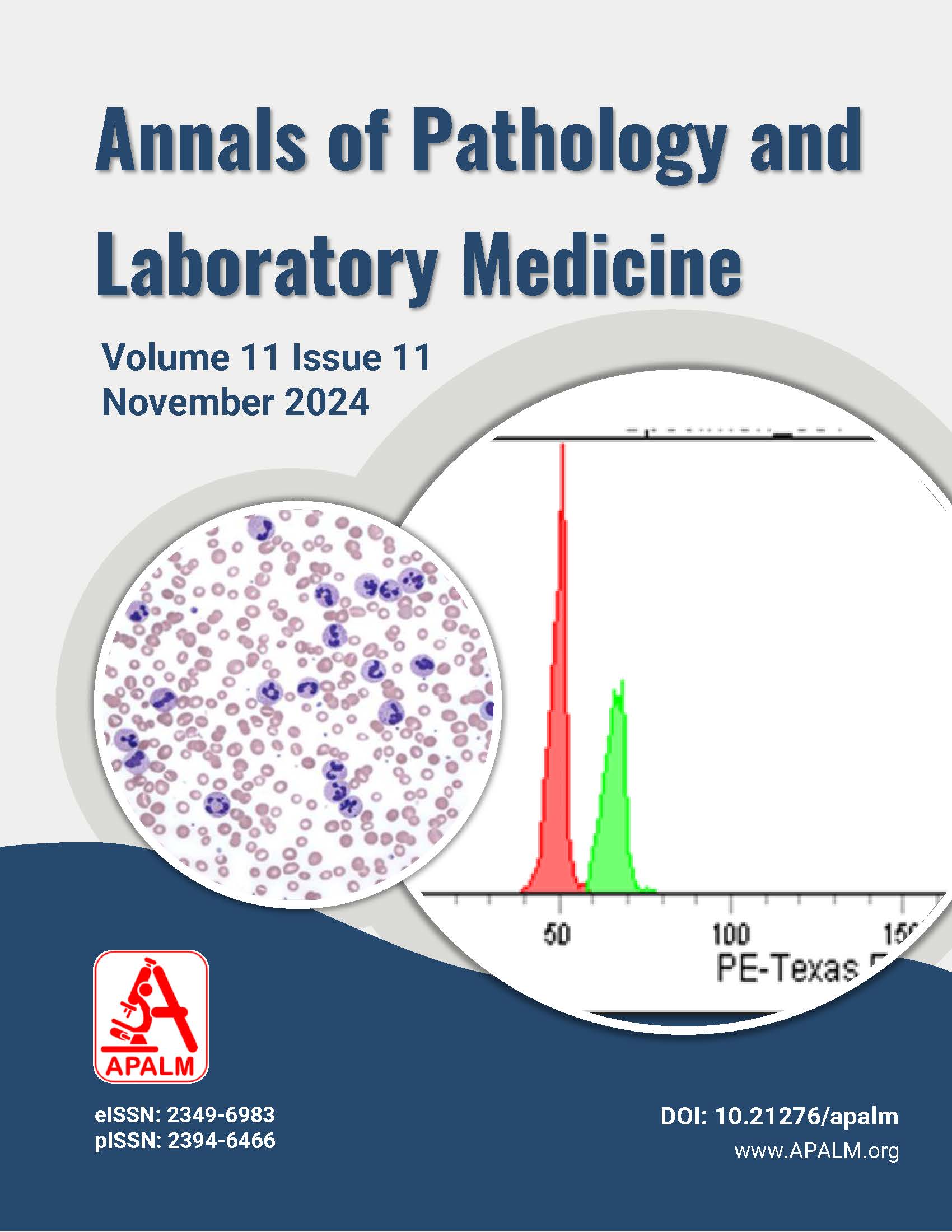Significance of Hematological Scoring System in Early Diagnosis of Neonatal Sepsis at a Tertiary Care Hospital
DOI:
https://doi.org/10.21276/apalm.3397Keywords:
Hematological Scoring System, neonatal sepsisAbstract
Background: Sepsis is the leading cause of death in neonates, accounting for 30%–50% of deaths in developing countries. Early diagnosis of neonatal sepsis remains challenging due to the nonspecific nature of its clinical features. While blood culture is the gold standard for diagnosis, it is time-consuming, taking several days, and can be costly. The Hematological Scoring System (HSS) is an alternative method that utilizes hematologic parameters—such as leukocyte count, polymorphonuclear (PMN) cells, immature PMN count, degenerative changes, and platelet count—for the early diagnosis of neonatal sepsis. Objectives: To determine the significance of the Hematological Scoring System (HSS) for the early detection of neonatal sepsis.
Materials and Methods: This retrospective study enrolled 50 neonates admitted to the NICU at SMS Multi-Speciality Hospital, Chandkheda, Ahmedabad, who were clinically suspected of sepsis. Hematological parameters were measured for all subjects, and each case was analyzed using the HSS.
Results: Among the 50 neonates in this study, the incidence of septicemia was 56% in males and 44% in females. Furthermore, 28% of neonates had an HSS greater than 5.
Conclusion: HSS is a highly sensitive indicator of sepsis. Its use in peripheral smear studies can serve as an effective sepsis screening tool for early diagnosis, thereby helping to reduce neonatal morbidity and mortality.
References
1. Elsayed MS, Hassan AA, Hashim AM, Kasem YT. The role of Hematological Scoring System (HSS) in early diagnosis of Neonatal Sepsis. Ann Neonatol J. 2021;3(1):85-106.
2. Bali Medical Journal (Bali Med J). 2016;5(3):488-492.
3. National Neonatal Perinatal Database 2002-2003 report [Internet]. Available from: http://www.nnfi.org/images/NNPD2002-03.pdf. Accessed 2016 Jan 22.
4. Rodwell RL, Leslie AL, Tudehope DI. Early diagnosis of neonatal sepsis using a Haematologic Scoring System. J Pediatr. 1988;112:761-767.
5. Manroe BL, Weinberg AG, Rosenfeld CR, Browne R. The neonatal blood count in health and disease. Reference values for neutrophilic cells. J Pediatr. 1979;95(1):89-98.
6. Shankar MJ, Agrawal R, Deorari AK, Paul V. Sepsis in newborn. AIIMS NICU protocols. 2008:1-18.
7. Chandna A, Rao MN, Srinivas M, Shyamala S. Rapid Diagnostic Tests in Neonatal Septicemia. Indian J Pediatr. 1988;55:947-953.
8. Ghosh S, Mittal M, Jaganathan G. Early diagnosis of neonatal sepsis using a hematological scoring system. Indian J Med Sci. 2001;55:495-500.
9. Arif SH, Ahmad I, Ali SM, Khan HM. Thrombocytopenia and bacterial sepsis in neonates. Indian J Hematol Blood Transfus. 2012;28(3):147-51.
10. Murphy K, Weiner J. Use of leukocyte counts in evaluation of early-onset neonatal sepsis. Pediatr Infect Dis J. 2012;31:1-4.
11. Rodwell RL, Leslie AL, Tudehope DI. Early diagnosis of neonatal sepsis using a Haematologic Scoring System. J Pediatr. 1988;112:761-767.
12. Manroe BL, Weinberg AG, Rosenfeld CR, Browne R. The neonatal blood count in health and disease. Reference values for neutrophilic cells. J Pediatr. 1979;95(1):89-98.
Downloads
Published
Issue
Section
License
Copyright (c) 2024 Ankita Dineshbhai Chotaliya

This work is licensed under a Creative Commons Attribution 4.0 International License.
Authors who publish with this journal agree to the following terms:
- Authors retain copyright and grant the journal right of first publication with the work simultaneously licensed under a Creative Commons Attribution License that allows others to share the work with an acknowledgement of the work's authorship and initial publication in this journal.
- Authors are able to enter into separate, additional contractual arrangements for the non-exclusive distribution of the journal's published version of the work (e.g., post it to an institutional repository or publish it in a book), with an acknowledgement of its initial publication in this journal.
- Authors are permitted and encouraged to post their work online (e.g., in institutional repositories or on their website) prior to and during the submission process, as it can lead to productive exchanges, as well as earlier and greater citation of published work (See The Effect of Open Access at http://opcit.eprints.org/oacitation-biblio.html).










